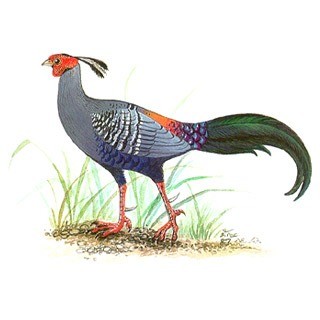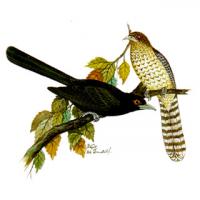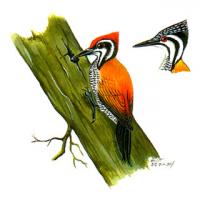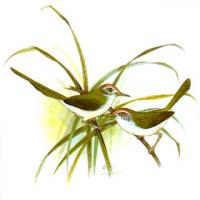Common Iora (Aegithina Tiphia)
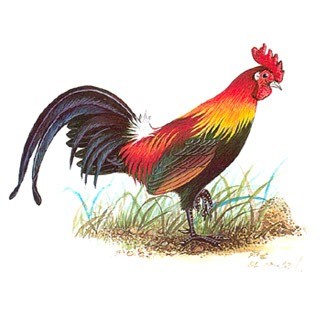
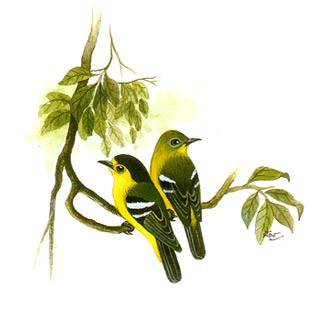
Order: PASSERIFORMES
Family: CHLOROPSEIDAE Ioras, Leafbirds
Scientific name: Aegithina Tiphia
English name: Common Iora
Characteristic: Size 15 cm. A small-sized bird with bright yellow underpart and 2 white wing bands. In breeding plumage a male has dark wings and tail; hindcrown to nape black. A female has green upperpart and duller green underpart. In non-breeding plumage, both sexes are quite similar to each other, though a male is bit more brighter in body colour.
Distribution: India, Southwest China, Southeast Asia, the Greater Sundas and the Palawan.
Habitat: Dry dipterocarp forest, mixed deciduous forest, mangrove forest, secondary growths, open fields and orchards. Most of those living in Sakaerat area are confined to the dry dipterocarp forest and grass fields among forest plantation; occasionally reported to occur in the clearings of dry evergreen forest.
Habit: Seen foraging as a widely-separated pair but keeps on contacting each other by calls. They jump from branch to branch looking for worms and insects hiding around the twigs and in leafy tree foliage. Breeding takes place from April to May; during this time, a small cup-shaped nest is built of grass stems and twigs binding securely by cobweb at tree fork or in bush. A clutch of 2-3 eggs will be laid in a nest; egg is white with pinkish wash and purplish brown pattern. The incubation time lasts about 14 days.
Status: Very common resident in Sakaerat forest. It is protected legally as a protected wild animal.









